A home inspector’s job is to evaluate the condition of the property, identify potential issues, and provide a detailed report for the buyer or seller. Understanding what home inspectors typically look for can help homeowners prepare for the inspection and address any concerns beforehand. Here are the top areas home inspectors focus on during their evaluations.
What Does a Home Inspector Look For?
- Structural Integrity
Structural problems can lead to costly repairs and affect the safety of the home. Inspectors look for:
- Foundation Issues: Cracks, uneven floors, and signs of settling or shifting.
- Roof Support: Inspectors ensure the roof’s framing and support beams are intact and free from damage.
- Walls and Ceilings: They check for cracks, water stains, or other signs of structural instability.
- Roofing System
The roof is a critical component of any home, protecting the structure from the elements. Inspectors pay close attention to:
- Shingles or Tiles: Missing, cracked, or curled shingles can indicate wear and tear or poor maintenance.
- Flashing and Gutters: Inspectors examine the drainage system and inspect for leaks near vents, chimneys, and skylights.
- Signs of Water Damage: Evidence of leaks or moisture penetration is a major red flag.
- Plumbing System
A properly functioning plumbing system is crucial for every home. Inspectors examine:
- Pipes and Fixtures: They look for leaks, corrosion, or outdated materials like lead or galvanized steel pipes.
- Water Pressure: Fluctuating water pressure may indicate underlying plumbing problems.
- Hot Water Heater: Inspectors check the heater’s age, condition, and whether it meets safety standards.
- Signs of Water Damage: Stains, mold, or rot near plumbing fixtures are inspected for potential leaks.
- Electrical System
Faulty electrical systems are a safety hazard and can lead to fire risks. Home inspectors carefully evaluate:
- Electrical Panel: They check for proper grounding, circuit breakers, and the panel’s overall condition.
- Wiring: Inspectors look for outdated wiring, such as knob-and-tube or aluminum, which can pose safety risks.
- Outlets and Switches: They test for functionality and proper grounding, particularly in wet areas like kitchens and bathrooms.
- Smoke and Carbon Monoxide Detectors: Ensuring these devices are present and operational is a standard part of the inspection.
- HVAC System (Heating, Ventilation, and Air Conditioning)
The HVAC system is responsible for maintaining comfortable temperatures and good air quality. Inspectors evaluate:
- Furnace and Air Conditioning Units: They check the age, condition, and functionality of these systems.
- Ductwork: Inspectors look for leaks, blockages, or poor insulation in the ducts.
- Ventilation: Proper airflow is essential to avoid moisture buildup and indoor air quality issues.
- Exterior Components
The outside of the home plays a significant role in its structural integrity and curb appeal. Inspectors examine:
- Siding and Paint: Cracked, peeling, or missing siding can indicate neglect or hidden damage.
- Windows and Doors: Inspectors look for proper sealing, functionality, and signs of rot or water damage.
- Drainage and Grading: They check whether the property is graded to direct water away from the foundation.
- Decks and Porches: Structural stability, railings, and any signs of rot or wear are assessed.
- Interior Elements
Inside the home, inspectors focus on safety and functionality. Key areas include:
- Floors: Uneven or sagging floors can indicate foundation issues or structural problems.
- Walls and Ceilings: Stains, cracks, or peeling paint may suggest water damage or poor maintenance.
- Stairs and Railings: Inspectors check for stability and proper installation of handrails.
- Basements and Crawlspaces: These areas are examined for moisture, mold, and pests, as well as insulation and ventilation issues.
- Insulation and Energy Efficiency
Adequate insulation is key to ensuring comfortable indoor temperatures and maximizing energy efficiency. Inspectors check:
- Attic and Walls: They assess the quality and quantity of insulation in these areas.
- Windows and Doors: Inspectors look for drafts or poor sealing that could lead to energy loss.
- Ventilation: Proper attic ventilation is critical to preventing moisture buildup and extending the roof’s lifespan.
- Safety Concerns
A primary focus of any home inspection is identifying potential safety hazards. These may include:
- Fire Hazards: Faulty wiring, old appliances, or missing smoke detectors are flagged.
- Asbestos and Lead: In older homes, inspectors may look for materials containing asbestos or lead paint.
- Radon and Mold: If requested, inspectors test for these environmental hazards that can impact health.
- Pest Damage
Evidence of pest infestations, such as termites, ants, or rodents, is a serious concern. Inspectors look for:
- Wood Damage: Signs of termites or carpenter ants chewing through wood.
- Droppings or Nests: Indications of rodent activity in basements, attics, or crawlspaces.
- Entry Points: Inspectors check for gaps, cracks, or holes that pests might use to access the home.
How to Prepare for a Home Inspection
To ensure a smoother inspection process:
- Address any known issues, such as leaky faucets or broken fixtures.
- Clean and declutter to provide easy access to critical areas like the attic, basement, and electrical panel.
- Replace or repair items like smoke detectors, lightbulbs, and filters before the inspection.
A home inspection is a thorough process designed to assess the condition of a property and highlight potential concerns. By understanding what inspectors focus on—structural integrity, roofing, plumbing, electrical systems, and more—you can better prepare your home for inspection and address any issues beforehand. Whether you’re a buyer or seller, a detailed inspection report can provide peace of mind and pave the way for a successful real estate transaction.

